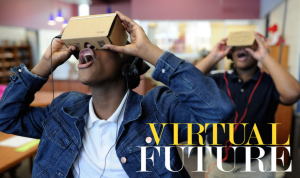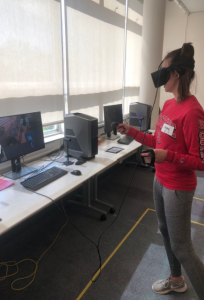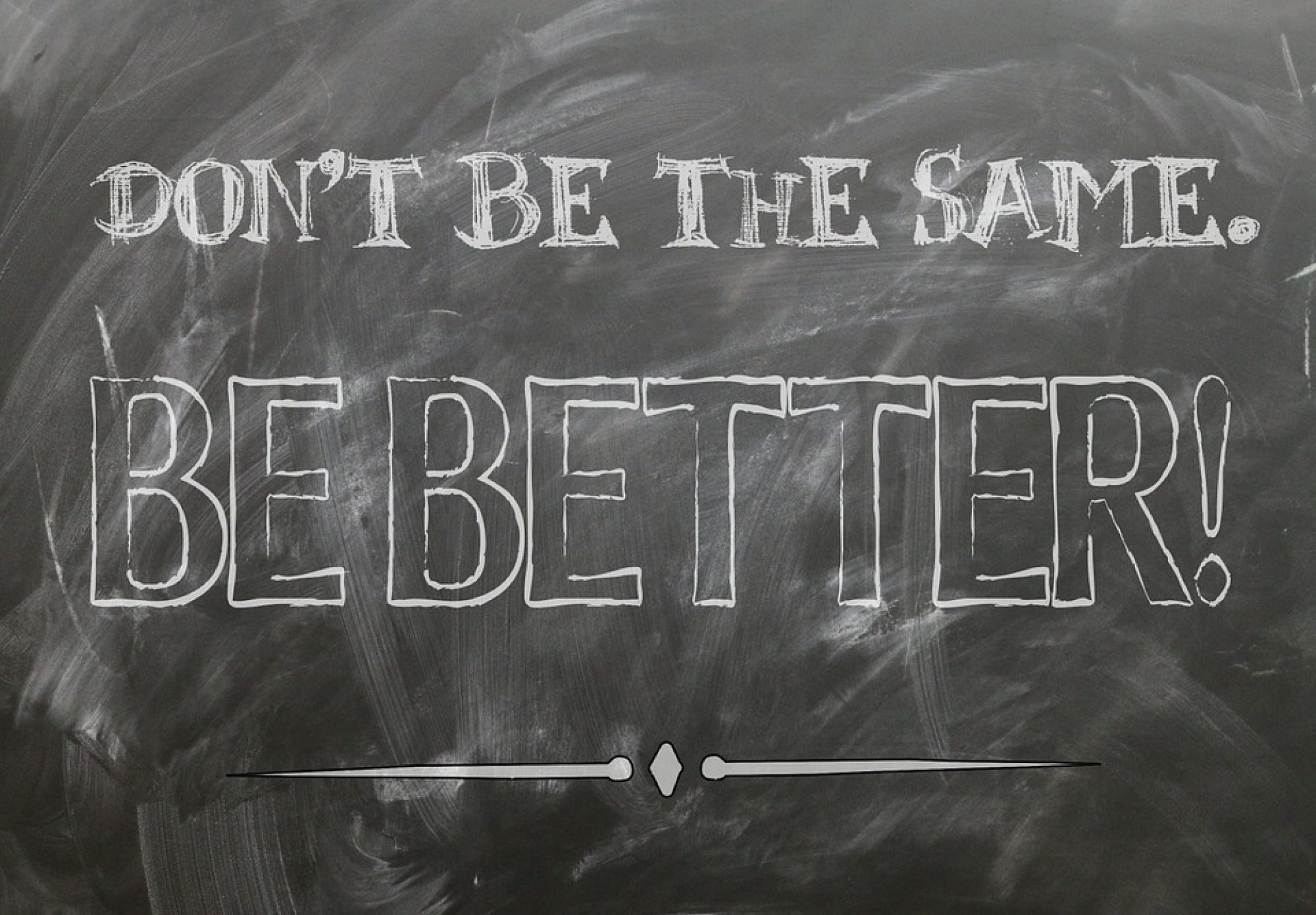Virtual Reality
Virtual reality allows its users to be involved within a simulated environment through technological advancements. By using 3-D technology, virtual reality engages its users to feel as if they are experiencing something first hand. This newer advancement in technology allows its users to see and discover things that they may not have experienced otherwise.

https://www.govtech.com/education/k-12/Virtual-Reality-in-K-12-Education-Is-It-Really-Helpful.html
So…why does this matter when it comes to the educational field?
There has been a current trend of virtual reality being implemented in classrooms. Many schools are using this resource as an opportunity for their students to gain new knowledge and experiences. I, myself, am a HUGE advocate for the use of virtual reality in classrooms. Here are some reasons why I believe in this technology:
- It encourages its users to become active participants. Students, especially elementary schoolers, love being active so this would be very enjoyable to them.
- Virtual reality is often able to accommodate different types of learning styles. For example, I know a lot of my future elementary school students would be more engaged and increase their interest in a subject. They are more likely to understand and retain information if they participate in the process.
- There are many different types of virtual realities and therefore many educational subject areas they can cover. A virtual reality that explores the heart is a potential topic within Anatomy. A virtual reality that allows you to go to a historical site such as Pearl Harbor is a topic covered in the subject of History.
- It keeps students engaged and WANTING to learn! As a future elementary school teacher, one of my top goals is to have my students wanting to learn rather than having to learn. If students are engaged and interested in something, they are more likely to want to learn about that particular subject and positively impact their classroom performance.
There is a sense of imagination that is involved when using virtual reality. When you feel you are in a completely different reality, you may start thinking differently. Students can learn through this creative experience by involving new/imaginative ways of thinking and viewing subjects.
Incorporating Virtual Reality in the Classroom
https://www.youtube.com/watch?v=SqnQ_iwwXwE
I love this video because the information being given to the audience is presented by someone who has experienced the joy of virtual reality.
He points out WHY we should care about virtual reality in education. Some good points he mentions are that virtual reality is altering the way we work, learn, and socialize. There is an educational method that is named “Embodied Learning”, which involves using complex concepts and events while feeling a physical experience. Virtual reality is highly effective when it comes to this method of learning.
Virtual Reality in K-12 Education: How Helpful Is It?
https://www.govtech.com/education/k-12/Virtual-Reality-in-K-12-Education-Is-It-Really-Helpful.html
I love this article because it gives multiple perspectives on the topic of virtual reality in the classroom
A quote I love from the speaker, Mfon Akpan: “Virtual reality is not the next best thing, it is the thing.”
Personal Experience
We got to personally experience the wonderful world of virtual reality. We got to interact with a robot, swim with dolphins in the sea, and draw creative paintings with this amazing technology. We used a headset making the entire experience very easy.

The ClassVR Standalone Headset

The ClassVR standalone headset doesn’t require any extra mobile device and the view the students are seeing is managed by a ClassVR Teacher Portal. The targeted audience is all ages and can last a full school day. I will definitely use this resource in my future classroom!
For more information about this Virtual Reality go to: http://www.classvr.com
